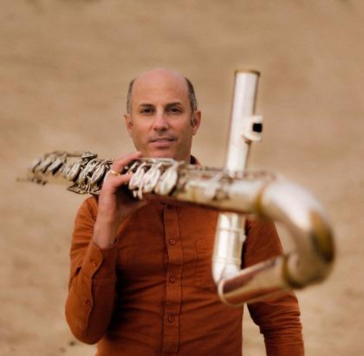Third chapter of the English version of the book 'Energieke Arbeid' published by the Centre of Applied Labour Market Research and Innovation (Dutch abbreviation: KCA) to celebrate the 10th anniversary of applied labour market research at Hanze University of Applied Sciences. This chapter discusses the second line of research of KCA: The Labour Market in the EnergyPort Groningen Region.

The Technical Departments at the Fontys University of Professional Education in Eindhoven, The Netherlands, offer a course which is devel-oped around the principles of Concurrent Engi-neering. Integrated Product Development (IPD) project teams are multi-disciplinary groups which develop products in co-operation with the regional industry. The companies involved are sponsoring the developments and the revenue is being used for more intensive group coaching by tutors and specialists. We experimented with communication technology to find a good compromise between time and costs. It turned out that intelligent pagers resulted in minor improvements, mobile phones are still too expensive, e-mail is functional but creates no group cohesion and most of the com-panies are rather conservative in their use of new communication tools. We also found out that the use of a Computer Supported Co-operative Work (CSCW) server is a possibility for information interchange as an alternative for e-mail attachments. The server is also used as an archive. In future we expect that CSCW will be an effective tool for project sup-port and control.
Recycling of plastics plays an important role to reach a climate neutral industry. To come to a sustainable circular use of materials, it is important that recycled plastics can be used for comparable (or ugraded) applications as their original use. QuinLyte innovated a material that can reach this goal. SmartAgain® is a material that is obtained by recycling of high-barrier multilayer films and which maintains its properties after mechanical recycling. It opens the door for many applications, of which the production of a scoliosis brace is a typical example from the medical field. Scoliosis is a sideways curvature of the spine and wearing an orthopedic brace is the common non-invasive treatment to reduce the likelihood of spinal fusion surgery later. The traditional way to make such brace is inaccurate, messy, time- and money-consuming. Because of its nearly unlimited design freedom, 3D FDM-printing is regarded as the ultimate sustainable technique for producing such brace. From a materials point of view, SmartAgain® has the good fit with the mechanical property requirements of scoliosis braces. However, its fast crystallization rate often plays against the FDM-printing process, for example can cause poor layer-layer adhesion. Only when this problem is solved, a reliable brace which is strong, tough, and light weight could be printed via FDM-printing. Zuyd University of Applied Science has, in close collaboration with Maastricht University, built thorough knowledge on tuning crystallization kinetics with the temperature development during printing, resulting in printed products with improved layer-layer adhesion. Because of this knowledge and experience on developing materials for 3D printing, QuinLyte contacted Zuyd to develop a strategy for printing a wearable scoliosis brace of SmartAgain®. In the future a range of other tailor-made products can be envisioned. Thus, the project is in line with the GoChem-themes: raw materials from recycling, 3D printing and upcycling.
Our unilateral diet has resulted in a deficiency of specific elements/components needed for well-functioning of the human body. Especially the element magnesium is low in our processed food and results in neuronal and muscular malfunctioning, problems in bone heath/strength, and increased chances of diabetes, depression and cardiovascular diseases. Furthermore, it has also been recognized that magnesium plays an important role in cognitive functioning (impairment and enhancement), especially for people suffering from neurodegenerative diseases (Parkinson disease, Alzheimer, etc). Recently, it has been reported that magnesium addition positively effects sleep and calmness (anti-stress). In order to increase the bioavailability of magnesium cations, organic acids such as citrate, glycerophosphate and glycinate are often used as counterions. However, the magnesium supplements that are currently on the market still suffer from low bio-availability and often do not enter the brain significantly.The preparation of dual/multiple ligands of magnesium in which the organic acid not only functions as a carrier but also has synergistically/complementary biological effects is widely unexplored and needs further development. As a result, there is a strong need for dual/multiple magnesium supplements that are non-toxic, stable, prepared via an economically and ecologically attractive route, resulting in high bioavailability of magnesium in vivo, preferably positively influencing cognition/concentration
Students in Higher Music Education (HME) are not facilitated to develop both their artistic and academic musical competences. Conservatoires (professional education, or ‘HBO’) traditionally foster the development of musical craftsmanship, while university musicology departments (academic education, or ‘WO’) promote broader perspectives on music’s place in society. All the while, music professionals are increasingly required to combine musical and scholarly knowledge. Indeed, musicianship is more than performance, and musicology more than reflection—a robust musical practice requires people who are versed in both domains. It’s time our education mirrors this blended profession. This proposal entails collaborative projects between a conservatory and a university in two cities where musical performance and musicology equally thrive: Amsterdam (Conservatory and University of Amsterdam) and Utrecht (HKU Utrechts Conservatorium and Utrecht University). Each project will pilot a joint program of study, combining existing modules with newly developed ones. The feasibility of joint degrees will be explored: a combined bachelor’s degree in Amsterdam; and a combined master’s degree in Utrecht. The full innovation process will be translated to a transferable infrastructural model. For 125 students it will fuse praxis-based musical knowledge and skills, practice-led research and academic training. Beyond this, the partners will also use the Comenius funds as a springboard for collaboration between the two cities to enrich their respective BA and MA programs. In the end, the programme will diversify the educational possibilities for students of music in the Netherlands, and thereby increase their professional opportunities in today’s job market.
